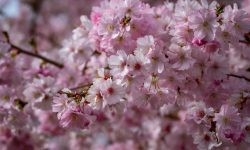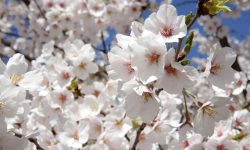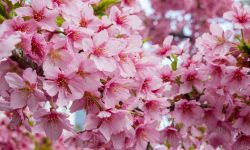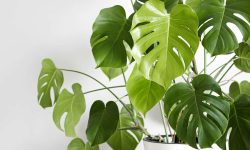Echinacea, commonly known as coneflower, is a beloved perennial native to North America. With its daisy-like petals, vibrant pinks, purples, and whites, and a distinctive central cone, this flower is both beautiful and beneficial. It attracts pollinators, supports biodiversity, and thrives in various conditions, making it an ideal addition to home gardens across many U.S. climates.
In addition to its ornamental value, Echinacea has a long-standing history of medicinal use, particularly in herbal remedies to boost the immune system. But for gardeners, its low maintenance and reliable bloom cycle are what make it a true standout.
Understanding Echinacea Varieties and Growth Habits

Echinacea, also known as coneflower, includes several species and hybrids, each with distinct colors, forms, and growth behaviors. Knowing the differences helps gardeners choose the right type for their region and landscape.
Echinacea purpurea
This is the most common species in American gardens. It grows 2 to 4 feet tall with purple-pink petals and a coppery cone center. Echinacea purpurea is easy to grow, adaptable to various soils, and tolerant of drought once established.
Echinacea pallida
Recognized by its drooping, pale-pink petals, this elegant species grows taller—up to 5 feet—and thrives in drier, low-fertility soils. It’s perfect for natural prairie gardens and attracts native bees.
Echinacea paradoxa
The only naturally yellow-flowered coneflower, paradoxa adds a bright contrast to garden beds. Though less common, it’s prized in breeding programs and pairs well with purple varieties for vibrant displays.
Hybrid Varieties
Modern hybrids like ‘Cheyenne Spirit’ and ‘PowWow’ offer a spectrum of colors—red, orange, white, and coral—with compact growth (18–30 inches). They bloom prolifically from summer to frost and work well in borders or containers.
Bloom Time and Longevity
Echinacea typically blooms from late June to early fall. With regular deadheading, many varieties continue flowering for 8–12 weeks. The dried seed heads also provide winter interest and food for birds like goldfinches.
Growth and Lifespan
These perennials thrive in USDA Zones 3–9. Once established, they return yearly and often spread. After 3–5 years, clumps may need dividing to rejuvenate growth and prevent center dieback.
Root and Foliage Structure
Echinacea develops deep taproots, making it drought-tolerant. Stems are upright and sturdy, and the lance-shaped leaves are coarse and dark green. The plant’s natural form makes it ideal for informal or pollinator-friendly gardens.
Choosing the Right Spot for Echinacea
Selecting the proper location is essential for growing healthy and vibrant echinacea plants. These sun-loving perennials perform best when planted in areas that receive at least 6 to 8 hours of full sunlight each day. Adequate light exposure ensures sturdy stems, strong root systems, and the abundant flowering that echinacea is known for throughout the summer and into fall.
The soil at the chosen spot should be well-drained to prevent waterlogging, which can lead to crown and root rot—two of the most common issues echinacea faces. While echinacea can tolerate poor soil, it thrives in light, sandy or loamy soil that has been enriched with organic matter such as compost or aged manure. Avoid heavy clay soils unless they are amended to improve drainage.
Good air circulation is also critical, particularly in humid or rainy regions, as it helps reduce the incidence of fungal diseases like powdery mildew or leaf spot. Try to avoid planting echinacea in overly sheltered or crowded locations where airflow is limited.
In cooler USDA zones (Zones 3 to 5), placing echinacea in a south-facing garden bed or near a reflective wall can provide a microclimate with extra warmth, which supports early-season growth. In hotter regions (Zones 8 and up), while echinacea enjoys heat, light afternoon shade may help prevent excessive drought stress during prolonged heat waves.
Also consider companion planting when selecting your echinacea site. Grouping it with other drought-tolerant, pollinator-friendly plants like yarrow, salvia, or rudbeckia not only boosts visual appeal but also creates a thriving ecosystem that supports bees, butterflies, and beneficial insects.
Preparing the Soil for Optimal Growth
To give echinacea the best start, begin by preparing a well-drained, nutrient-balanced soil. Echinacea prefers loamy or sandy soils with a neutral to slightly acidic pH between 6.0 and 7.0. Avoid heavy clay, as poor drainage can lead to root rot and fungal issues.
Before planting, loosen the soil to a depth of at least 12 inches to promote deep root development. Mix in several inches of compost or well-rotted manure to improve texture and provide slow-release nutrients. If your native soil is compacted or lacks organic matter, consider building raised beds or mounding the planting area to improve drainage and aeration.
It’s not necessary to over-fertilize echinacea. In fact, excessive nitrogen can lead to weak stems and fewer blooms. A balanced, organic soil amendment during planting will usually be enough to sustain healthy growth throughout the season. Test the soil if you’re unsure of its condition and adjust pH or nutrients accordingly.
Planting Echinacea: Seeds or Transplants?
Starting from Seeds
Seeds can be started indoors 8 to 10 weeks before the last frost date or sown directly outdoors in fall or early spring. Cold stratification—chilling seeds for 30 days in a moist medium—boosts germination rates for spring sowing.
Transplanting Seedlings or Nursery Plants
If using store-bought or homegrown seedlings, wait until the risk of frost has passed. Space plants 18 to 24 inches apart to allow airflow and prevent overcrowding. Water well after planting to help roots establish.
Watering Strategies for Healthy Growth
Fertilizing for Long-Lasting Blooms
Pruning and Deadheading for More Blooms
Regular pruning and deadheading play a key role in extending the bloom period and maintaining the health and appearance of Echinacea plants. While coneflowers are known for their low-maintenance nature, strategic cutting encourages the plant to redirect its energy into producing new buds, rather than setting seed prematurely.
Benefits of Deadheading Echinacea Flowers
Deadheading, or removing faded blooms, prevents the plant from focusing its energy on seed production. When done regularly, this practice stimulates the growth of new flowering stems and can lead to multiple blooming cycles throughout the summer. For gardeners aiming for a vibrant display or continuous pollinator attraction, deadheading is one of the simplest yet most effective techniques.
Use clean, sharp pruners or garden scissors to snip off spent flowers just above the nearest set of healthy leaves or branching point. This helps maintain the plant’s shape and allows light and air to reach developing buds underneath.
Timing and Technique for Pruning
In addition to deadheading, pruning stems and foliage serves both aesthetic and horticultural purposes. Early in the growing season, light pruning of any weak, leggy, or overcrowded stems encourages stronger, bushier growth. Midseason pruning can also help manage height and prevent flopping, especially in nutrient-rich soils.
Cut back flower stems to the base after the second or third flush of blooms begins to fade. If you are not collecting seeds or encouraging reseeding, removing seed heads promptly can maximize bloom performance and reduce self-sowing.
When to Stop Deadheading
By late summer or early fall, it’s advisable to stop deadheading and allow some flower heads to mature into seed cones. These serve as natural winter food sources for birds, particularly finches, and add architectural interest to the winter garden. Leaving some seed heads intact also supports self-seeding for the following spring if natural propagation is desired.
By incorporating thoughtful pruning and deadheading practices, you can significantly boost the floral longevity and visual appeal of Echinacea in your garden, season after season.
Supporting Echinacea with Mulching and Staking
The Role of Mulching in Plant Health
Applying a two- to three-inch layer of organic mulch around the base of Echinacea helps retain soil moisture, suppress weeds, and regulate root zone temperature. Mulch also improves soil structure over time as it breaks down, enriching the soil with nutrients. Avoid letting mulch touch the stems directly, as this can encourage rot or fungal problems, particularly in wet climates.
In colder zones, mulching in late fall protects the crown of the plant from freeze-thaw cycles, which can heave roots out of the soil and damage young plants. Use shredded bark, straw, or compost for optimal results.
When and How to Stake Echinacea
Although Echinacea has sturdy stems, taller varieties or plants grown in rich soil may become top-heavy and prone to flopping during storms or windy conditions. In such cases, staking helps preserve an upright, tidy appearance and prevents damage.
Use bamboo stakes, metal supports, or circular grow-through grids installed early in the season before flowering stems become too tall. Tie stems loosely with soft garden twine or clips, allowing for natural movement while still maintaining vertical growth.
Together, mulching and staking provide structural and environmental support that encourages healthier, more resilient Echinacea plants throughout the growing season.
Managing Pests and Diseases Effectively
Common Pests to Watch For
Japanese beetles, aphids, and leafhoppers are among the most frequent pests that target Echinacea. Japanese beetles chew on leaves and petals, leaving behind skeletonized foliage, while aphids cluster on tender stems and flower buds, sucking sap and spreading viruses. Leafhoppers not only feed on sap but may also transmit aster yellows—a serious disease that causes twisted, deformed growth.
Monitoring plants regularly helps catch infestations early. Spray plants with a strong stream of water to dislodge aphids or use insecticidal soap or neem oil for control. In cases of persistent beetle damage, hand-pick the pests in the morning and drop them into soapy water.
Fungal and Bacterial Concerns
Diseases like powdery mildew, leaf spot, and root rot can affect Echinacea, particularly in humid conditions or if airflow is restricted by overcrowding. Powdery mildew appears as a white coating on leaves, while bacterial leaf spots show as dark, water-soaked blotches.
To prevent these problems, space plants adequately and water at the base early in the day to minimize leaf wetness. Improve drainage with compost amendments and avoid heavy mulching right against the crown. Remove and dispose of affected plant parts promptly.
Addressing Aster Yellows
Aster yellows, spread by leafhoppers, is a viral-like phytoplasma disease that causes yellowed, distorted growth and unusual greenish flower heads. Unfortunately, infected plants cannot be cured. Promptly remove and destroy affected plants to prevent the spread.
By staying proactive with good cultural practices, regular monitoring, and early intervention, you can keep Echinacea strong, vibrant, and productive throughout the season.
Overwintering Echinacea for Longevity
Preparing Plants for Winter
As fall approaches, stop fertilizing to allow the plant to enter dormancy naturally. After the first hard frost, cut back dead stems to about 2–4 inches above ground level, or leave them standing if you wish to support overwintering birds and beneficial insects, as Echinacea seed heads are a valuable food source.
Insulating the Root Zone
Apply a 2- to 3-inch layer of mulch, such as straw, shredded leaves, or bark, around the base of the plant after the ground has frozen. This helps insulate the crown against freeze-thaw cycles and protects dormant roots from temperature extremes.
Wintering in Colder Zones or Containers
In zones below USDA zone 3 or for plants grown in containers, move pots into an unheated garage or cold frame to prevent root freeze. Avoid watering during dormancy unless soil becomes completely dry, as excess moisture can cause root rot.
By taking a few strategic steps in fall, you can protect your Echinacea plants and ensure they return stronger and more floriferous each spring.
Dividing and Propagating Echinacea
When and How to Divide
The best time to divide Echinacea is in early spring or fall, when temperatures are cool and the plant is not in active bloom. Carefully dig up the root clump and use a sharp, sterilized knife or spade to divide it into sections, each with healthy roots and several shoots. Replant immediately in well-prepared soil, spacing divisions to allow airflow and future growth.
Propagation by Seeds
Echinacea also propagates well from seeds, though it takes longer to flower compared to division. Sow seeds in late fall or stratify them in the refrigerator for 6 to 8 weeks before spring planting to improve germination.
Both methods maintain the plant’s vigor and allow gardeners to multiply favorite varieties while supporting pollinators and biodiversity.
Supporting Pollinators and Wildlife
Echinacea is a powerhouse for biodiversity, attracting a wide range of beneficial insects and wildlife throughout the growing season.
Attracting Pollinators
The plant’s daisy-like blooms are rich in nectar and pollen, making them especially attractive to native bees, honeybees, and butterflies such as monarchs and swallowtails. To maximize pollinator activity, avoid using systemic pesticides and plant Echinacea in clusters to create a visible target for foraging insects.
Supporting Birds and Beneficial Insects
After blooming, Echinacea forms seed heads that serve as an important winter food source for finches and other small birds. Leaving dried seed heads standing into fall and early winter also provides shelter for overwintering beneficial insects like ladybugs and lacewings.
By incorporating Echinacea into your garden and allowing natural cycles to occur, you not only enhance bloom performance but also help sustain vital ecosystems.
Encouraging Self-Seeding for Natural Spread
To allow echinacea to self-seed effectively, let some flower heads remain on the plant after blooming. As they dry and form seed heads, they naturally release seeds that fall to the ground and germinate the following spring. Avoid deadheading all blooms if you want natural reseeding.
Ensure the soil remains undisturbed around mature plants in late summer and fall so seeds can settle and sprout. Light mulching is fine but don’t smother the area. Water lightly during dry spells to support seedling emergence.
This low-maintenance strategy supports a fuller, more naturalized look and ensures continuous growth without the need to replant.
Designing with Echinacea in Garden Beds
Color and Height Coordination
With its bold daisy-like blooms in shades of pink, purple, white, yellow, and orange, Echinacea pairs beautifully with ornamental grasses, salvia, rudbeckia, and coreopsis. Its upright habit and medium-to-tall height (usually 2 to 4 feet) make it ideal as a middle or back border plant in layered beds.
Seasonal Structure and Visual Flow
Echinacea maintains visual appeal even after blooming, as its seed heads provide texture and height. Use it to create visual flow by repeating clumps throughout the garden for rhythm and balance, while mixing colors and forms to add depth.
Low-Maintenance Focal Points
Because it thrives in full sun and needs little watering once established, Echinacea is perfect for low-maintenance beds. Position it in pollinator-focused areas, near pathways, or as focal points in prairie-style or cottage gardens.
Long-Term Maintenance Tips for Season After Season Success
Refreshing Soil and Mulch Annually
Each spring, loosen the topsoil gently and incorporate compost or aged organic matter around the base of the plants to improve nutrient levels and drainage. Reapply a fresh layer of mulch to suppress weeds and conserve moisture, but keep it away from the crown to prevent rot.
Dividing Every Few Years for Vitality
Every 3 to 4 years, divide crowded clumps in early spring or fall to rejuvenate growth and prevent overcrowding. This not only maintains plant vigor but also allows you to expand your planting area or share healthy divisions with other gardeners.
Monitoring for Decline or Woody Growth
Older echinacea plants may begin to show reduced flower production or thickened, woody crowns. Trim back dead stems, remove unproductive centers, and encourage younger shoots from the base to take over. Replacing aging plants with new seedlings or divisions ensures continued bloom quality.
Adjusting Care Based on Climate and Growth
In hotter climates, you may need to increase watering during extended dry spells. In cooler regions, applying extra mulch in fall can insulate roots against deep freezes. Continuously observe how your plants respond to weather and adjust your care accordingly.
By applying these thoughtful long-term practices, echinacea can remain a vibrant, healthy, and reliable part of your garden design for many seasons to come.
FAQ About Echinacea Plant Care
How long does it take for Echinacea to bloom from seed?
When started indoors or directly sown in spring, Echinacea typically blooms in its second year. However, with optimal conditions and cold stratification, some varieties may bloom in the first year.
Can I grow Echinacea in containers?
Yes, but choose a large, deep pot with excellent drainage. Use well-draining potting mix and provide full sun. Water sparingly in winter.
Is Echinacea toxic to pets?
Echinacea is generally considered non-toxic to dogs and cats, though ingestion of large quantities might cause mild gastrointestinal upset.
Why isn’t my Echinacea blooming?
Possible reasons include too much shade, overly rich soil, excessive nitrogen fertilizer, or poor drainage. Reevaluate site conditions and care routine.
How do I control pests organically?
Hand-pick visible pests or spray with neem oil or insecticidal soap. Encouraging beneficial insects like ladybugs and lacewings also helps maintain balance.
Conclusion
Caring for echinacea is more than just a gardening task—it’s a rewarding journey that brings beauty, resilience, and life into your outdoor space. With their bold blooms and effortless charm, echinaceas ask for little but give so much in return: color through the seasons, nourishment for pollinators, and structure for your garden’s design.
Whether you’re nurturing a single plant or cultivating a vibrant meadow of coneflowers, consistent care, thoughtful placement, and seasonal attention will ensure your echinacea thrives year after year. As you build a garden that supports not only your senses but also local ecosystems, echinacea stands tall as a perfect ally. Grow them with intention, and they’ll reward you with blooms that tell a story of resilience, grace, and natural beauty.






